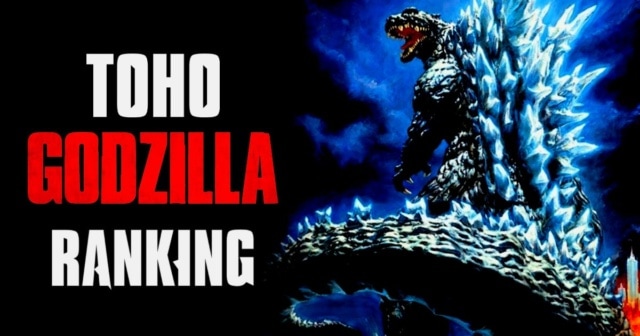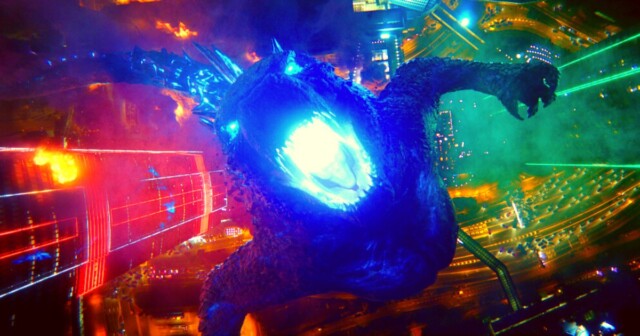Review: ‘Godzilla Minus One’ is a Monster Blockbuster Befitting the Franchise Legacy

Amidst the post-war rubble and lingering trauma of nuclear destruction still present today in the world, Godzilla Minus One emerges as a blockbuster befitting a franchise that, like society, has transformed over the past 70 years. It continues breathing new life into kaiju stories. Still, instead of rehashing the political satire of 2016’s Shin Godzilla, it returns to the story’s roots, where Godzilla first emerged from the irradiated waters as a genre.
We can all identify with Godzilla Minus One’s compelling human narrative in this post-pandemic world. Director Takashi Yamazaki presents both the human stories and destruction with great cinematic care and skill, making it a movie worth experiencing on the big screen.
In October of this year, I had the opportunity to attend a special screening of the 1954 version of Godzilla, directed by Ishirō Honda, at The Japan Society in New York City. The film was screened in 35 mm in the packed theater, with many New York City Comic Con attendees. It was a unique experience, and what was especially exciting was the special preview we got of Godzilla Minus One. Toho International marketing director Stacy Burt swore us all to secrecy, but it was clear from that trailer that Godzilla Minus One would be special.
[Warning: There are mild spoilers ahead for Godzilla Minus One.]
Godzilla Minus One is a callback to the original Gojira
In so many ways, Godzilla Minus One is a call back to the original Gojira, or Godzilla. Part of what brought us into that 1954 story was the characters’ humanity. They actually have arcs and development! For that reason, we care about Ogata, Emiko, and Serizawa’s secret.
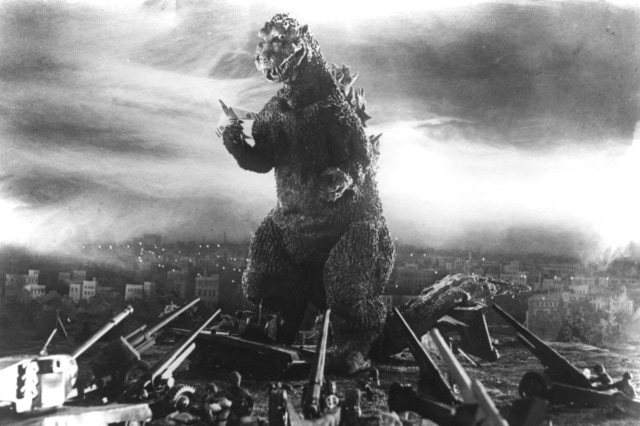
Godzilla Minus One focuses similarly on the human story instead of just the monster smashing and blasting Tokyo, although there is that, too. Director Takashi Yamazaki gives us a ton of action based and tonal callbacks to the original movie, including the iconic Godzilla train scene. It makes for satisfying monster viewing.
The music of Godzilla Minus One is layered and, like the film, anchored to emotions. It’s also anchored to the past. Naoki Satô weaves in the original score, Godzilla Suite, from the 1954 film at moments for maximum effect. The heavy rising cymbals almost make the tension frantic. It’s fantastic, and combined with all the other filmmaking tricks, it just makes Godzilla Minus One so much better.
The villain of the story is…
Depending on what iteration you’re viewing, Godzilla has alternated between hero and villain. In Godzilla Minus One, the giant lizard is very much the villain of the film. When the monster is on-screen, he’s terrifying.
Sure, Godzilla itself isn’t ultra-crisp. There’s grittiness and an almost lava-cracked earthen to the creature from deep within the sea. But that’s part of the kaiju’s allure. Godzilla is terrifying because of good filmmaking. The psychological setup of the story, the scale, and the sounds all work together to create something where you can feel the horror in a visceral way.
This boat scene midway through the film that was heavily featured in the trailer is an excellent example of this. I knew it was coming, but was utterly unprepared for what it would be to see on screen. It was scary and reminded me of that first time many moons ago when I saw Jurassic Park in theaters as a kid. Intellectually, you know T. rex isn’t there with the rain bearing down on his scaly skin. But because of the movie magic, you feel it. Godzilla’s water scene is similarly terrifying. It’s Jaws, Jurassic Park, and I wanted so much more.
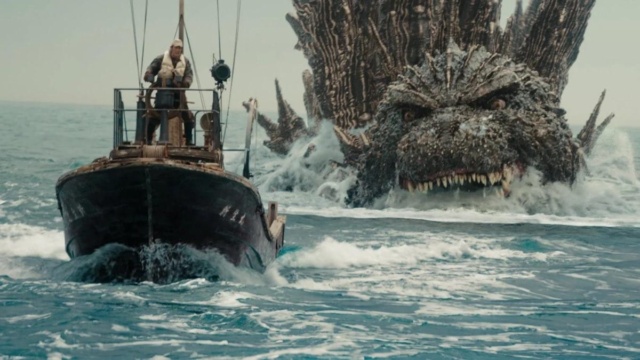
The psychological torment of shame and grief
Part of Godzilla’s true potency comes because he’s paired with the grief and shame of our film’s “hero” Kōichi Shikishima (Ryunosuke Kamiki). Kōichi is a failed kamikaze pilot; he dared to live instead of sacrificing himself for Imperial Japan. Not only did fake mechanical problems scrub Kōichi’s kamikaze sacrifice and send him to Odo, but Godzilla attacked Odo, and Kōichi could not even mount a defense against the monster.
Director Takashi Yamazaki has anchored Godzilla to all of Kōichi’s stresses and created a terrifying psychological beast. After the war, Kōichi has a found family with Noriko Ōishi (Miname Hamabe) and Akiko (Sae Nagatani), who also all faced difficulties and suffered because of the war. It’s a downtrodden existence, and Kōichi’s job on a mine sweeping ship puts him on course to confront the giant lizard again. Arguably, it’s this found family that gives Kōichi’s courage.
Without going too deeply into the spoilers as to why, there is a moment in the film where Kōichi screams. It’s a primal moment of grief and rage. You can view it as grief personified or a roar back at the king of the monsters known for his deafening roar.
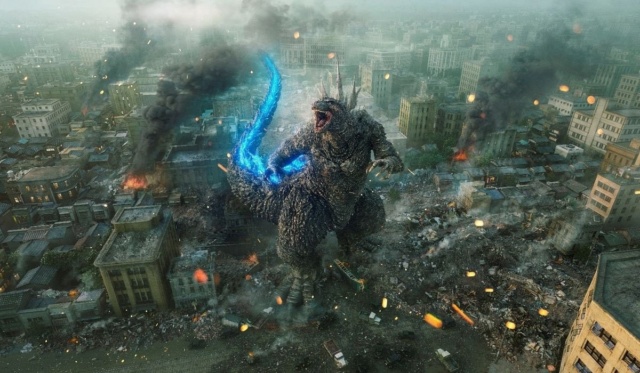
The moment is elevated by a black rain that falls from the sky because of Godzilla’s heat ray. It’s a beautiful and painful scene, and the rain mirrors what happened during the atomic aftermath in Japan after the bombs were dropped. (This, too, is a callback to Godzilla’s psychological purpose after World War II, as a metaphor for the atomic horrors and the potential for the horrors to reoccur. ) The scream marks Kōichi’s turning point and the key to his growth. Kamiki, Hamabe, and the adorable Nagatani give their hearts to these performances.
A broader moment for Japanese language films
Typically, American films have cultural hegemony throughout the globe. Just look at how Barbie’s success this past summer or Marvel’s recent lack of success was the talk of headlines everywhere for a snapshot example of this. Godzilla Minus One is a Japanese language film with English subtitles, and given this past weekend’s box office success, it seems like part of a larger moment for these films.
A few weeks ago, audiences saw Hirokazu Kore-da’s film Monster, about the danger of the human variety. Studio Ghibli just released the dubbed Hayao Miyazaki’s The Boy and the Heron animated film. This burst of films is exhilarating, and for Godzilla Minus One in particular, leaves this author with a ton of hope for strong franchise success in the future.
Final thoughts on Godzilla Minus One
Godzilla Minus One is a monster blockbuster befitting the franchise’s long legacy. There’s a focus on the human stories, and not just the destruction from having a giant lizard tear through Tokyo, Godzilla Minus One. It paints a picture of a post-war society living in the shadow of atomic havoc, cultural grief, and how to move forward in the future.
If you’re not a kaiju fan, you will be by the end of Godzilla Minus One. See the film in theaters while you can. Godzilla Minus One is now playing in theaters nationwide. Learn more about the film, including how to get tickets, at the franchise’s official website.
Do you need more kaiju in your life? Check out Maxance Vincent’s ranking of all the live-action Godzilla movies over the last 70 years. If that’s not enough for you, check out the review of Monarch, Apple TV+’s new kaiju series, and see why it was called “an entertaining beast.”
Ranking All The Live-Action Toho Godzilla Movies
Exclusive: Mari Yamamoto & Anders Holm on Monarch: Legacy of Monsters

